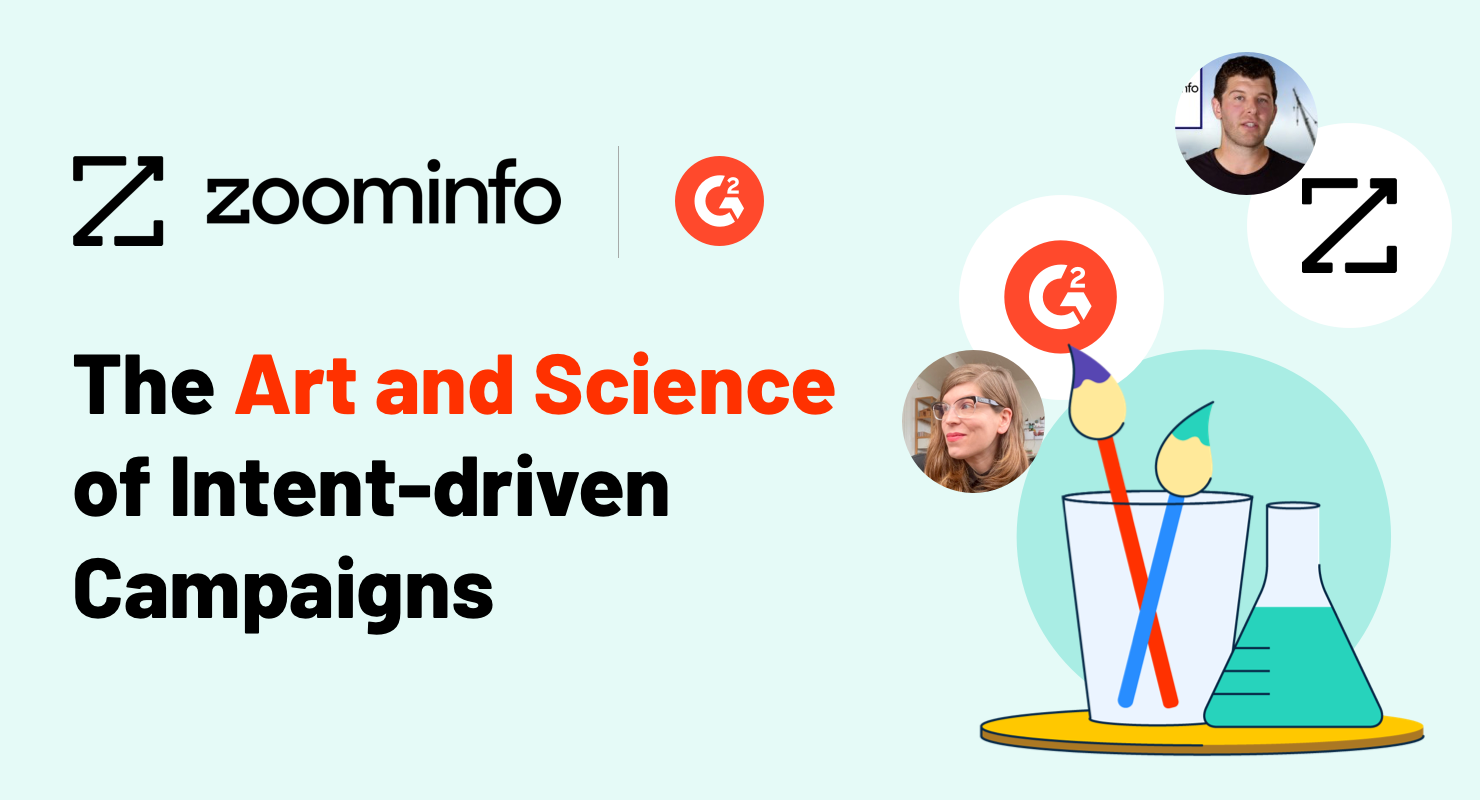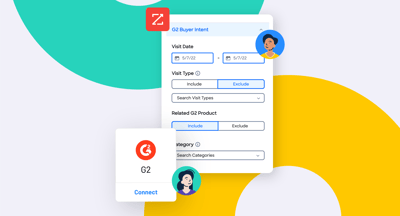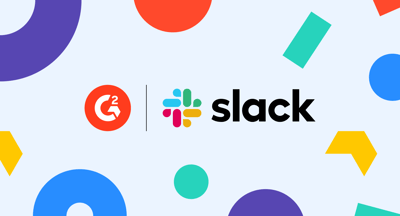July 26, 2022
 by Stephen Hoops / July 26, 2022
by Stephen Hoops / July 26, 2022

In both life and sales, timing is everything.
Here’s the mildest take of all time: there’s no sense in pitching prospects that aren’t ready to buy. A sales professional’s primary concern is knowing when to engage buyers.
That’s where intent data comes in. Instead of hoping your marketing efforts are hitting your prospects at the right time, you can use intent data to figure out where your ideal buyer is in their journey right now.
But there’s a catch: if you’re new to integrating intent data into your account-based marketing (ABM) strategy, where do you start? By learning from the experts, of course.
In our recent webinar, attendees heard Ben Salzman, SVP, Special Projects at ZoomInfo, and Robin Izsak-Tseng, VP of Revenue Marketing at G2, talk about some best practices and key considerations for crafting robust intent data strategies. If you didn’t get a chance to catch the webinar, this recap is for you.
Intent data is a set of signals or data points that help identify whether an account is in the market and how far along they are in the buying journey. The value of intent data is that it removes much of the guesswork of marketing and sales campaigns.
The teams that most often work with intent data include:
The world is experiencing turbulence and uncertainty. Inflation is impacting governments, companies, and citizens everywhere. And in markets where a possible recession is on the horizon, organizations are left to figure out where they can cut costs to harden themselves against an economic downturn.
The first things on the chopping block in these scenarios? Marketing budgets. Because of this, marketers have to lean into proven tactics and strategies.
Robin Izsak-Tseng
VP of Revenue Marketing at G2
Guesswork is an inevitable roadblock that can lead to higher costs. Intent data, however, is an excellent remedy to budget efficiency during the current economic climate.
It’ll be helpful to have an example of what intent data can look like to add more context to what Ben and Robin cover. In this case, we’ll use G2 Buyer Intent signals.
The following are data points or “signals” that vendors on G2 can use to assess where customers and buyers are in the sales cycle. All this data is captured from user activity on G2 since buyers can research software in many different ways. Sellers can act on all of these signals, segmenting appropriately.
Suggested reading: Learn how to get intent data in front of your revenue teams with The Buyer Intent Playbook.
Now, let’s get to the juicy bits of the webinar you came here for.
To kick things off, the hosts asked attendees to answer a quick poll. Here’s what they said about their top challenges when using intent data to improve B2B marketing efforts.
Overwhelmingly, the audience said that just crafting their intent data strategy was their most common roadblock. Data is great, but organizations will fail if they don’t have a rigorous and thought-out plan.
There’s good news if you share similar struggles. Ben and Robin have a ton of great insights that can help any organization craft a world-class intent data strategy.
In talking with many companies, Ben notices a common trend. Most companies don't regularly audit and document many finer details when it comes to their playbook for intent signals.
“Most companies don’t have an exhaustive view of the [marketing] plays they run.”
Ben Salzman
SVP, Special Projects at ZoomInfo
Ben went on to say that companies need to understand things like:
In addition to these considerations, it’s critical to incorporate and define which intent signal is core to a given play. Greater visibility into their playbook can help organizations better grasp the value of their intent data and provide opportunities to optimize existing initiatives.
It’s easy to get overwhelmed with data. But you shouldn’t maintain a laser focus on a handful of data points.
And yes, some metrics will have higher priority than others. Knowing when a prospect visits your G2 profile is probably more valuable than viewing sponsored content. Instead of looking at these two signals separately, Ben suggests that you try to think about them in a complementary way.
Ben Salzman
SVP, Special Projects at ZoomInfo
Additionally, intent signals are powerful indicators on their own. But it’s in combination with other information that you can take even more precise action. Each intent signal can have drastically different implications, like knowing whether they’re existing customers or prospects.
The best thing you can do is get as much data flowing into your systems and databases as possible. You’ll need a comprehensive strategy to understand how to evaluate this mound of data – but it’s always better to have an abundance than not enough.
We know that Google Search is fantastic for capturing awareness by creating content to match informational queries. But there’s a good chance you wouldn’t try to serve a sales-qualified lead top-of-funnel content if they’re much further along in their journey.
Leveraging intent data should never use a one-size-fits-all approach, especially if you can access specific insights about your buyers. When you know where they are in the sales cycle, you should know how to engage them at that precise moment.
In terms of what this would look like with G2 Buyer Intent, let’s examine why it’s important to differentiate two seemingly similar signals.
You might think you could treat two intent signals similarly, but this isn’t the case. It’s important to consider whether they’re prospects or current customers.
However, you’ll have far better results by using all the information available to craft your message and actions accordingly since each intent signal is unique. Leveraging integrations once you have a clear playbook will help to streamline and automate triggered actions that you define.
Lastly, Ben and Robin also have strong feelings about identifying people on your team to manage each signal. Whether that’s one person or multiple owners, it can be crucial to establish your overall strategy behind intent-driven efforts.
A common theme throughout the webinar from both Ben and Robin was how intent data is more than a transactional one-off. The two hosts suggest that intent data has ongoing value in the long-term for more than just acquiring new accounts.
“Intent data should be one of the key attributes that helps feed your targeting and ICP model.”
Ben Salzman
SVP, Special Projects at ZoomInfo
Companies can use intent data to inform their audience targeting over several quarters or years. It’ll require a lot of effort and planning sessions to document how to process such a large volume of raw data, but the result will be worth it.
Working with data science teams and other technical stakeholders is essential to power a go-to-market model that allows targeting criteria to adapt over time.
Let’s say that your sales team has identified a target account whose intent data suggests they’re a strong match. Without knowing exactly what should happen next, you’ll end up squandering more opportunities than landing them if you don’t act quickly.
Although this seems common sense, Ben sees this as another concept around intent data that many companies don’t have.
Ben Salzman
SVP, Special Projects at ZoomInfo
It’s essential to define which signal or combination of signals identifies a company as a high-intent match. Once this is in place and you start evaluating opportunities, having that automatic workflow is crucial for rapid outreach.
Intent data is an immensely powerful tool that can supercharge your sales and marketing teams to be more efficient in engaging your buyers at precise moments.
We were able to pack in a ton from this webinar, but here are three key concepts you’ll want to hold onto if you’re thinking about maximizing the value of your intent-driven campaigns.
Stephen Hoops is a former Sr. Content Marketing Specialist at G2. He focused on creating content that helps tech industry sales professionals and B2B SaaS marketers find success with G2 products such as Buyer Intent, Review Generation, and more. After receiving his B.A. in Journalism from West Virginia University in 2013, he has helped countless B2B brands reach new highs through content creation and SEO. When not nerding out about the artistry behind well-written copy, Stephen can be found info-dumping about homemade cocktails, Italian cuisine, and why vinyl is the superior physical medium for music.
When it comes to data, less is more, right?
 by Stephen Hoops
by Stephen Hoops
There’s nothing quite as satisfying as a cold drink on a sweltering summer day.
 by Stephen Hoops
by Stephen Hoops
Marketing and sales teams talk a lot about alignment, but in practice, it rarely happens.
 by Harshita Tewari
by Harshita Tewari
When it comes to data, less is more, right?
 by Stephen Hoops
by Stephen Hoops
There’s nothing quite as satisfying as a cold drink on a sweltering summer day.
 by Stephen Hoops
by Stephen Hoops


